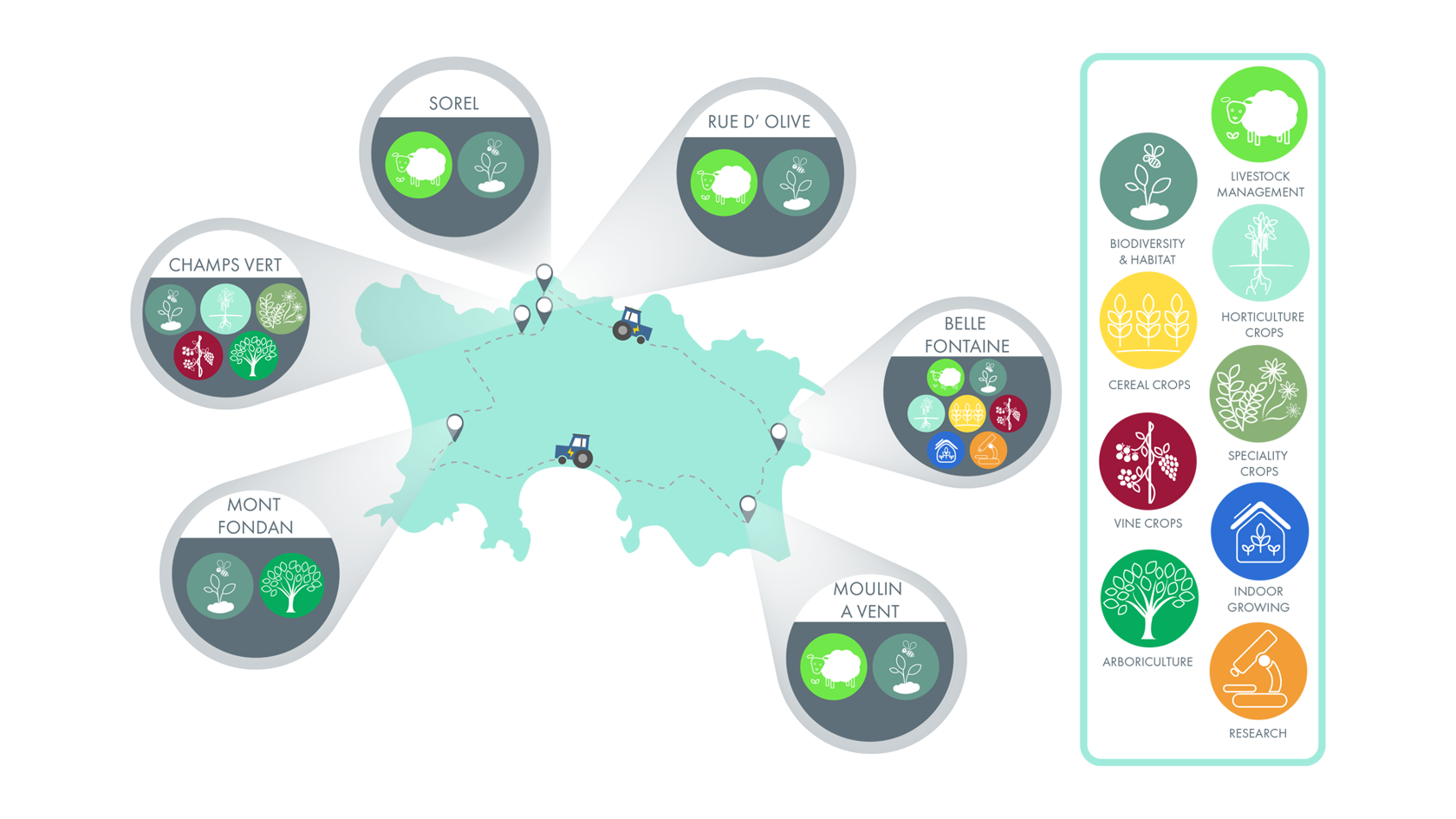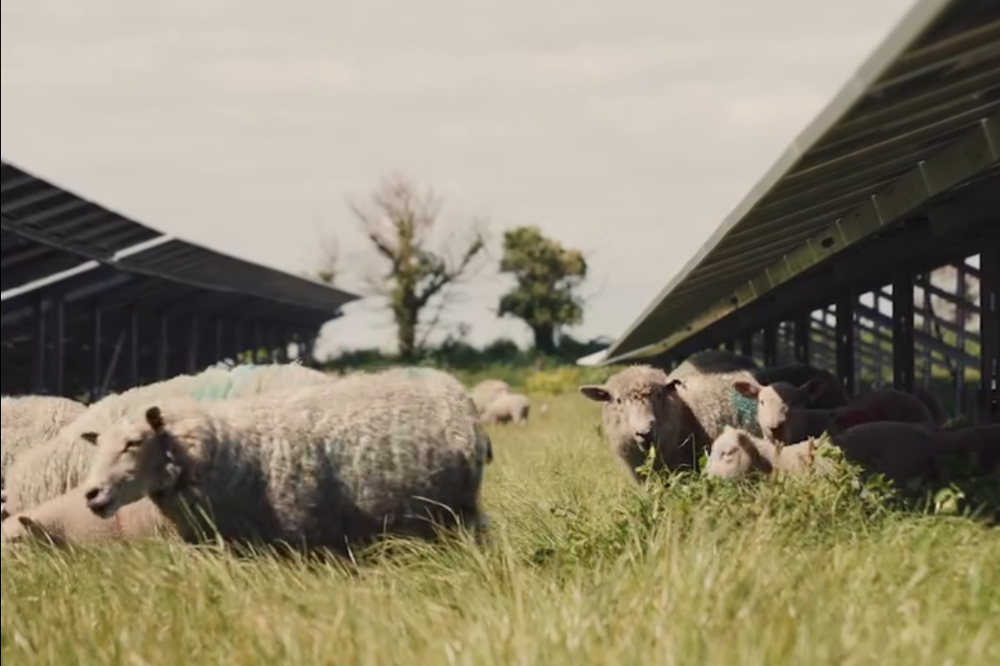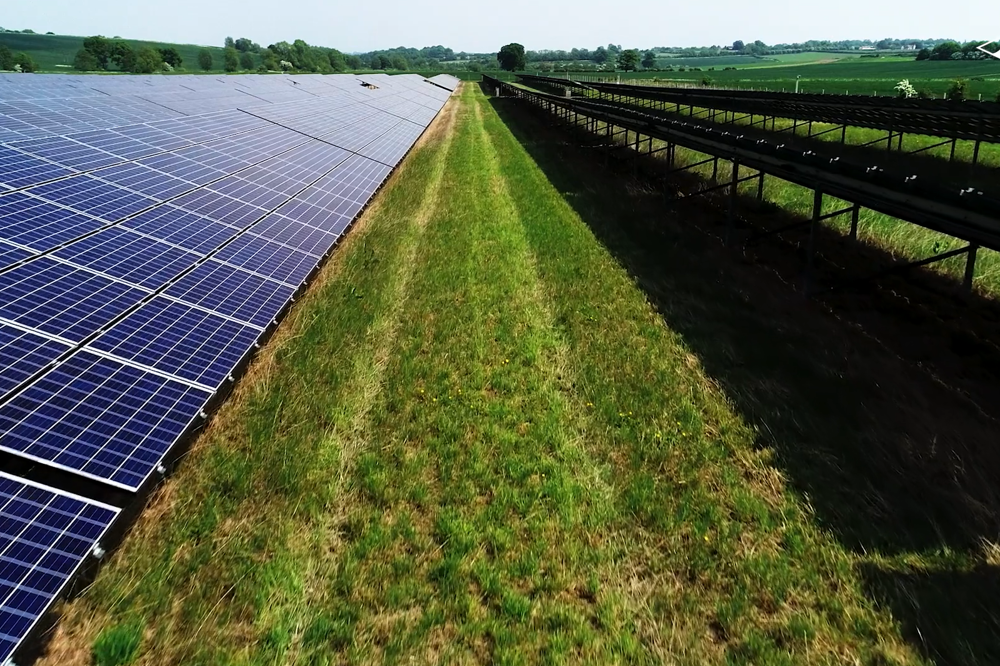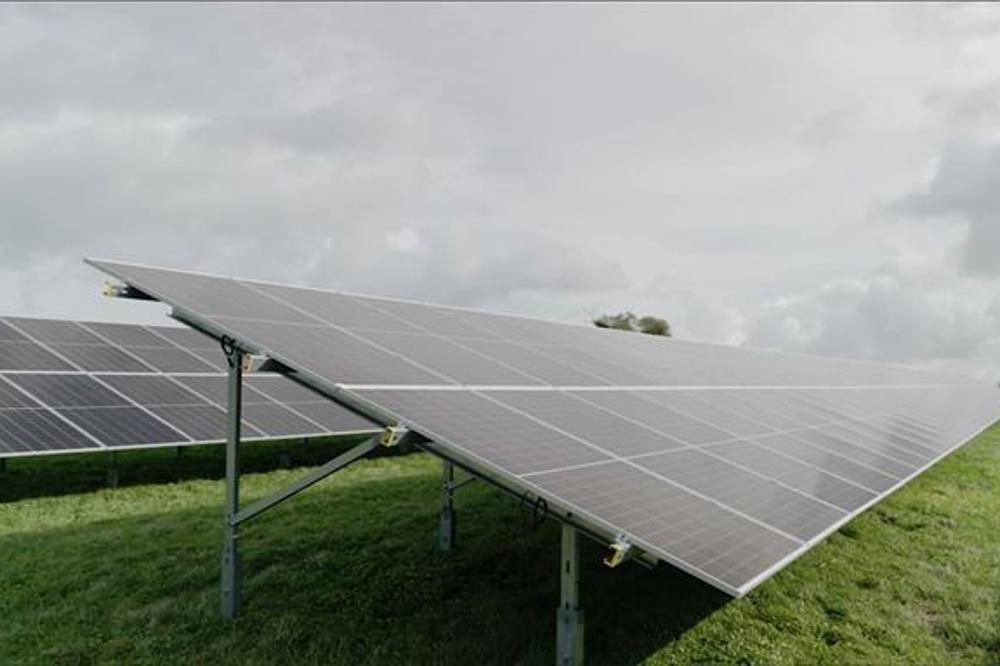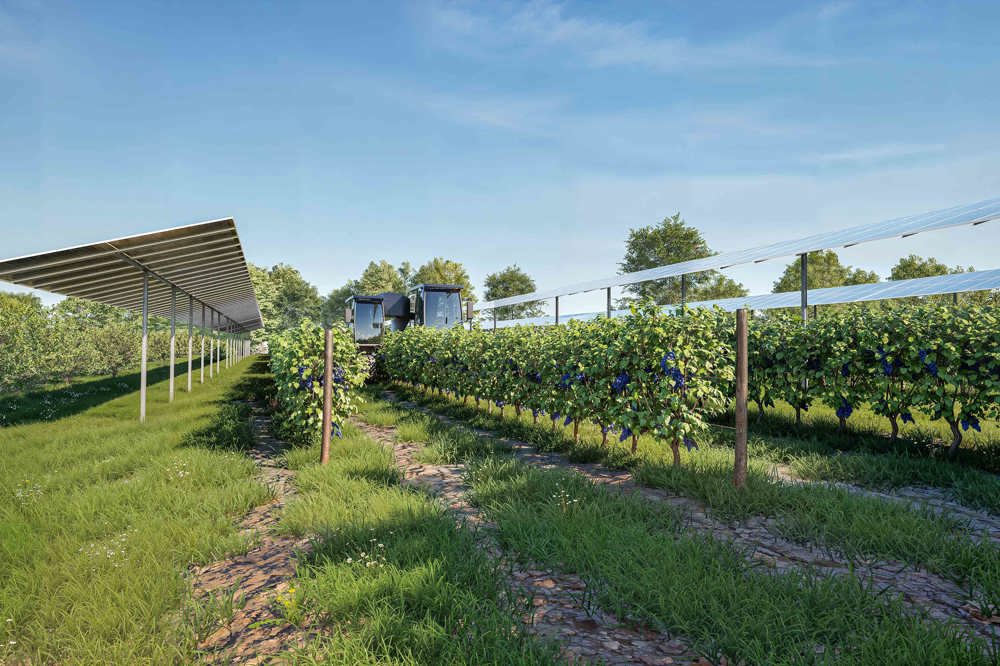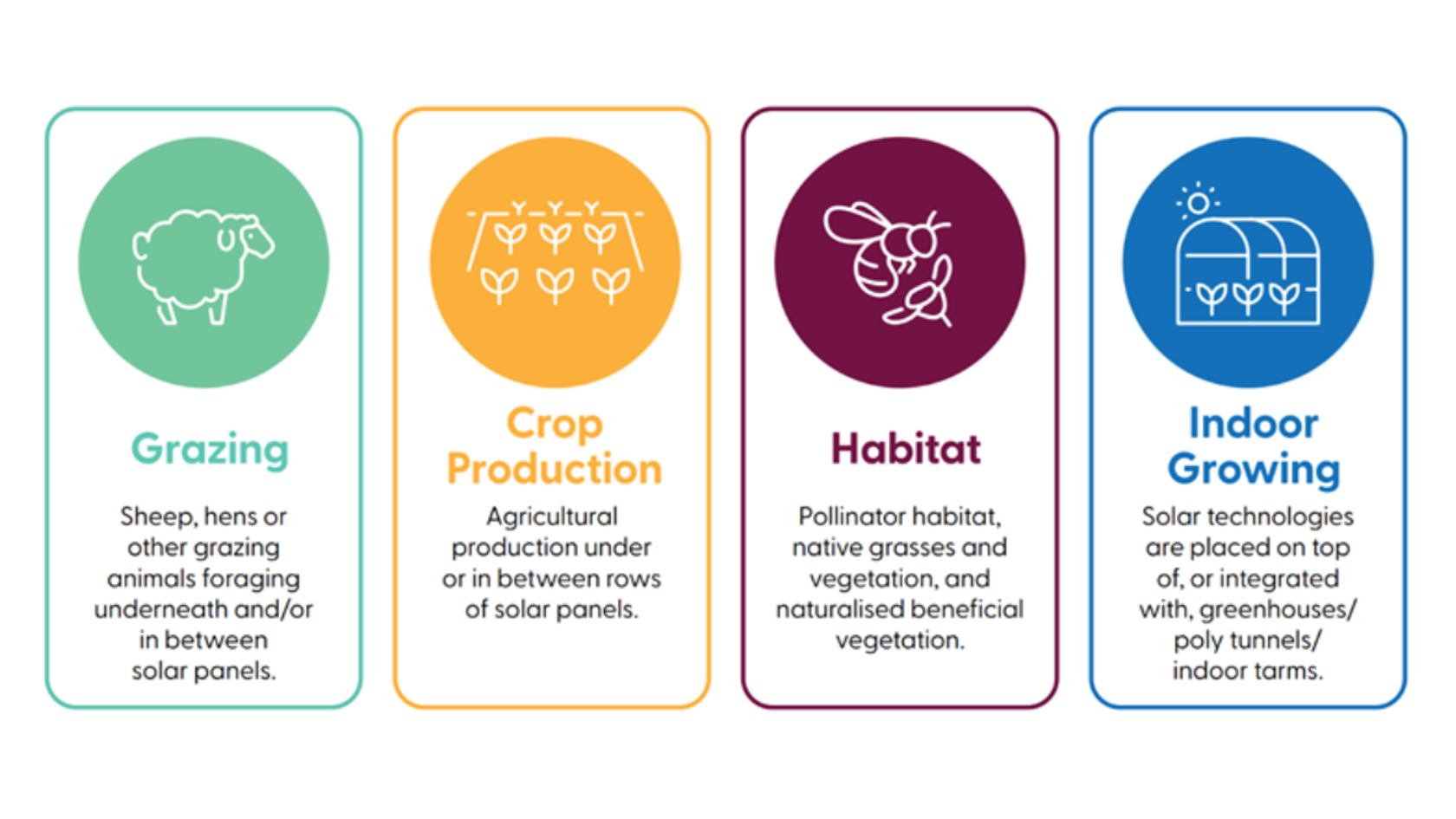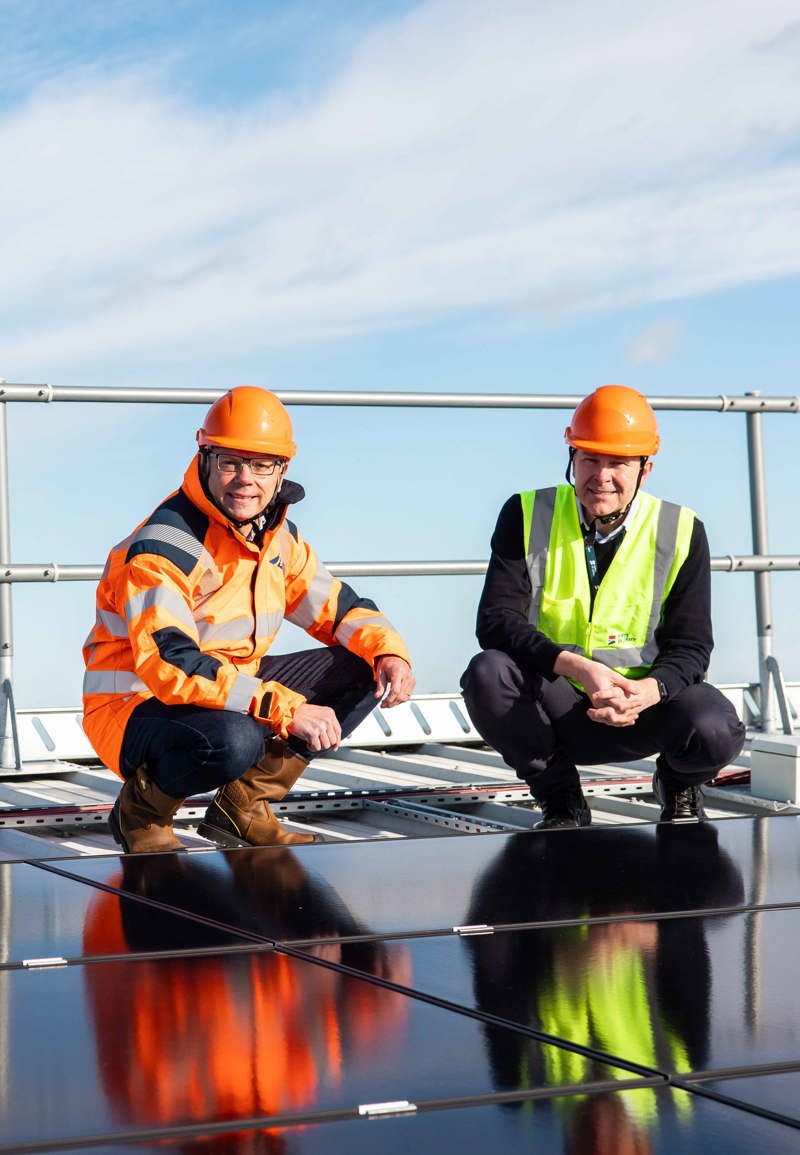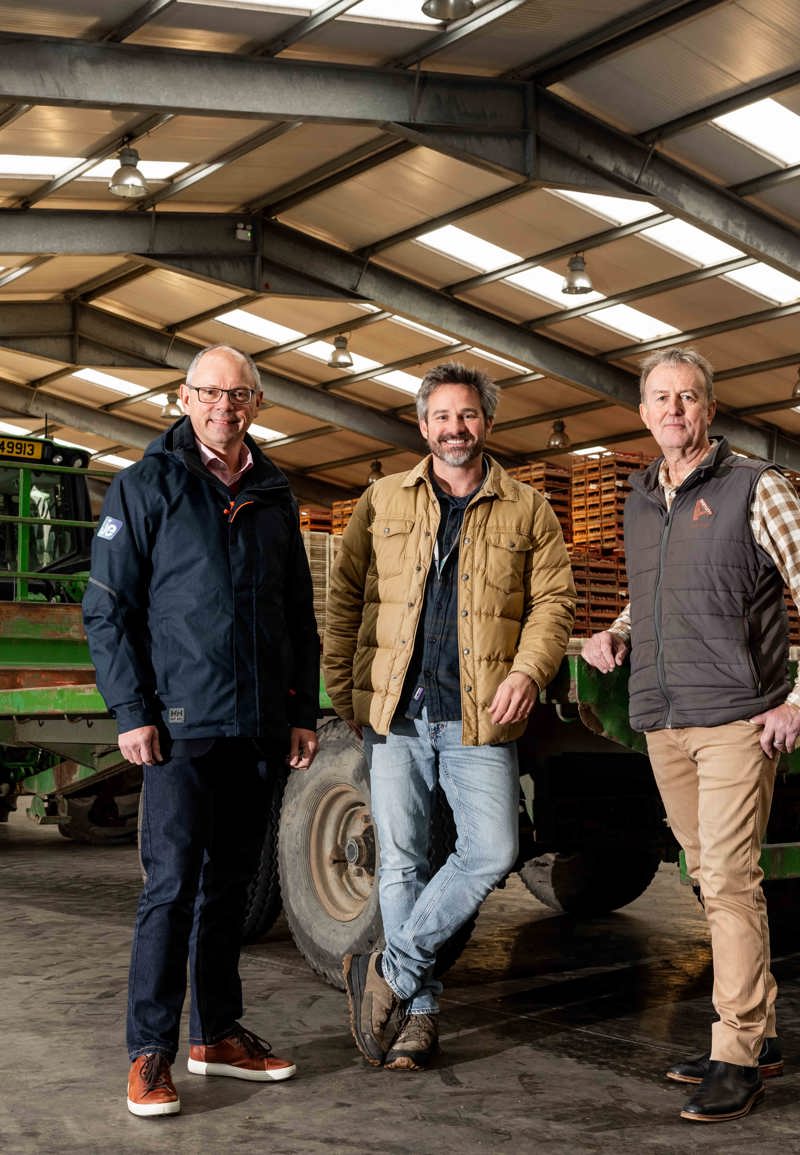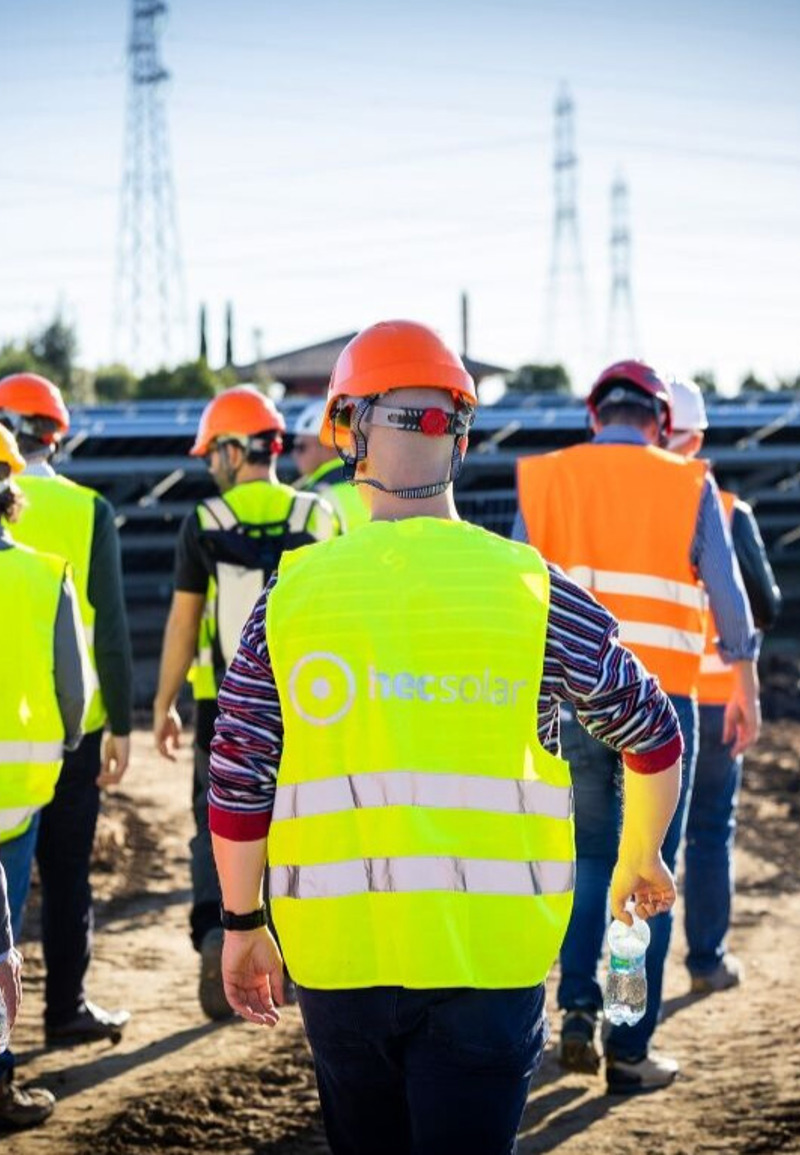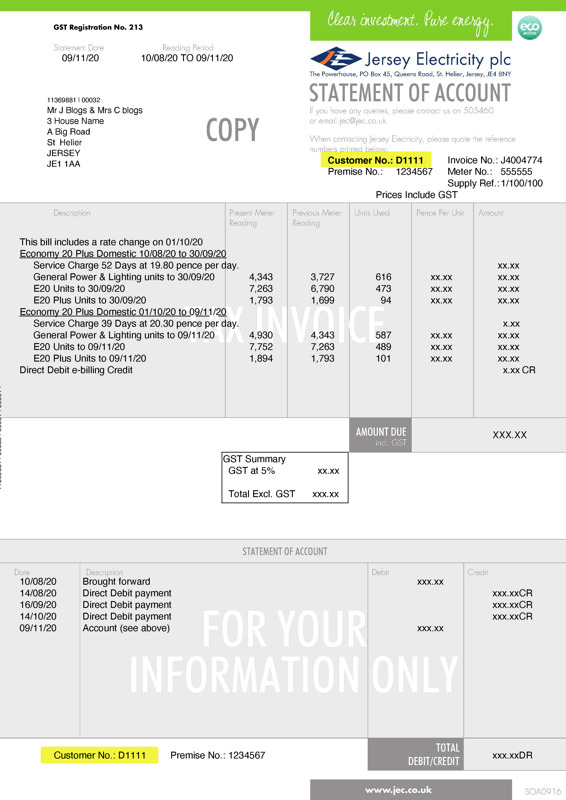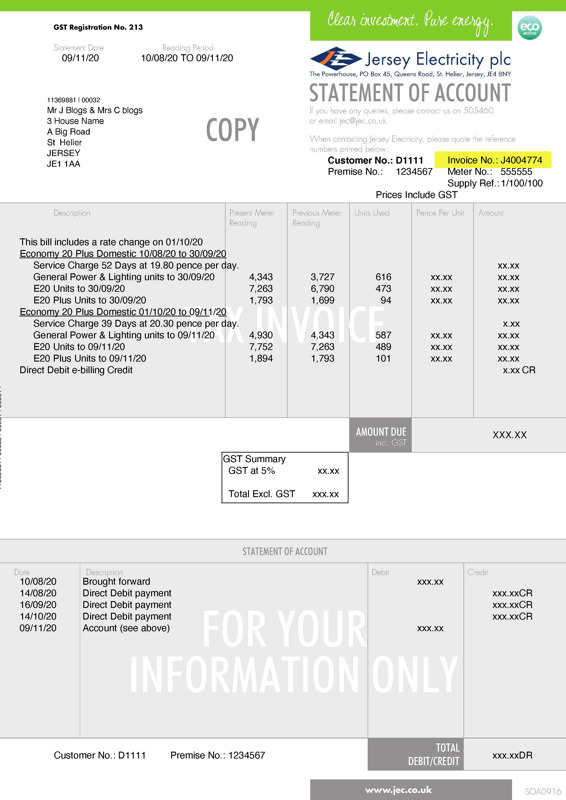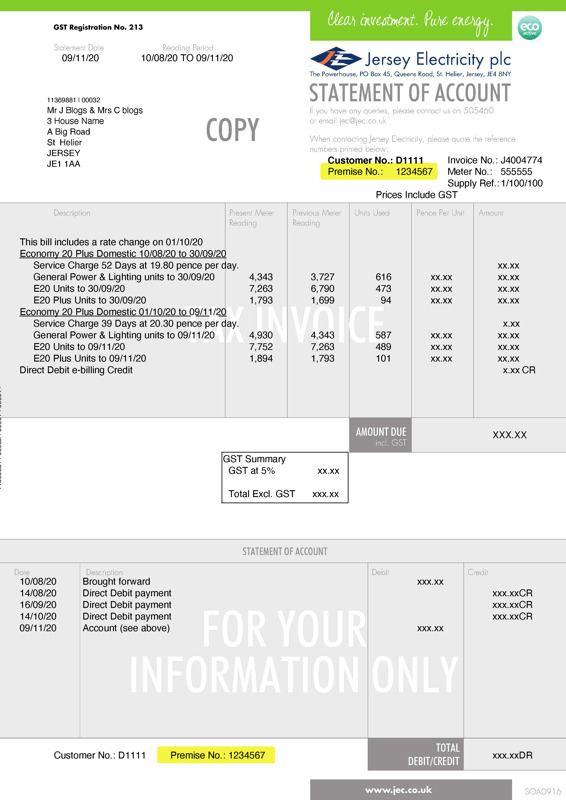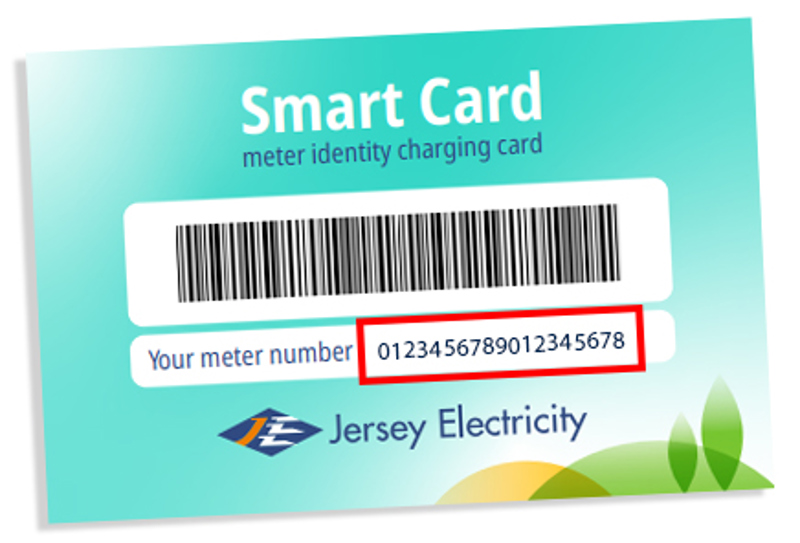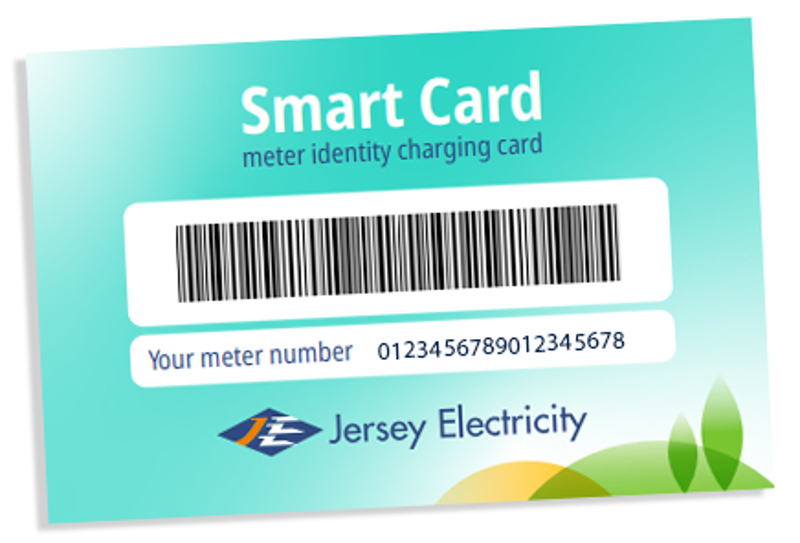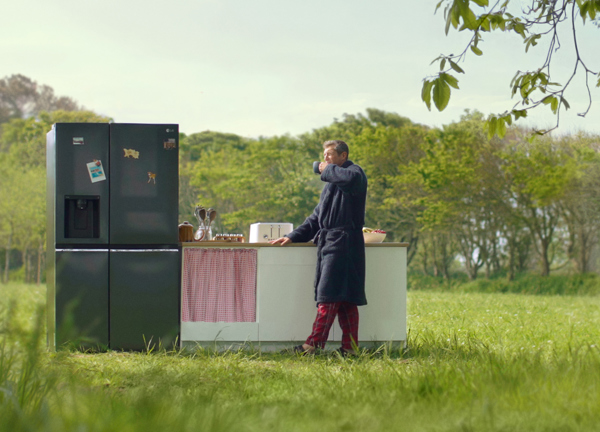
Our solar strategy
Jersey Electricity's solar strategy focuses on expanding rooftop solar across the Island, complemented by selected ground-mount projects. This initiative aims to significantly boost locally-generated renewable energy, supporting the goal of powering 5,000 homes by 2030. These projects contribute to energy independence and align with the Island Plan and Carbon Neutral Roadmap
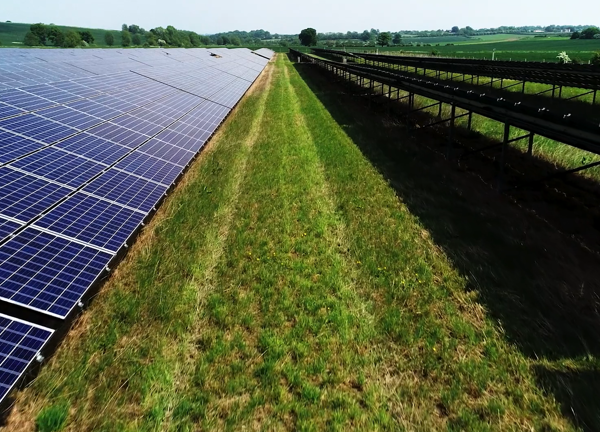
Solar matters now
We are investing in 25MWp of ground-mounted solar, which will meet around a third of Jersey’s peak electricity demand during the summer months.
Solar technology is available today and positively supports the government’s Carbon Neutral Roadmap, Island Plan, Rural Economy Strategy and Future Economy Programmes.
Generating power on-Island supports the local economy and helps to keep power prices lower and more reliable, as solar farms are a competitive and stable source of electricity for 40 years.
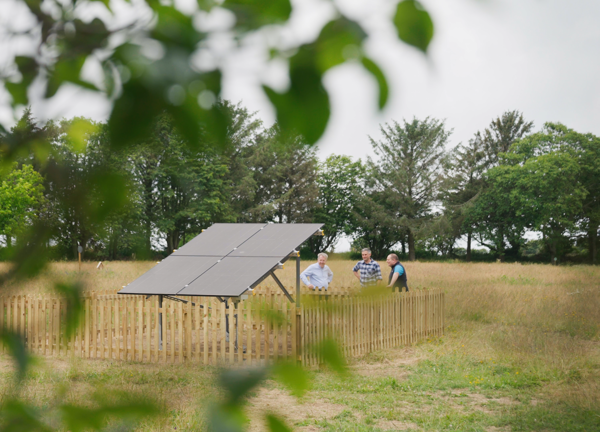
Breathing new life into agricultural land
Our carefully chosen sites must be kept in agricultural use. We have volunteered to do this from the start because it is the right thing to do. This is why we’re championing innovative farming methods and agrivoltaics to help the local farming industry diversify and support smaller farming businesses.
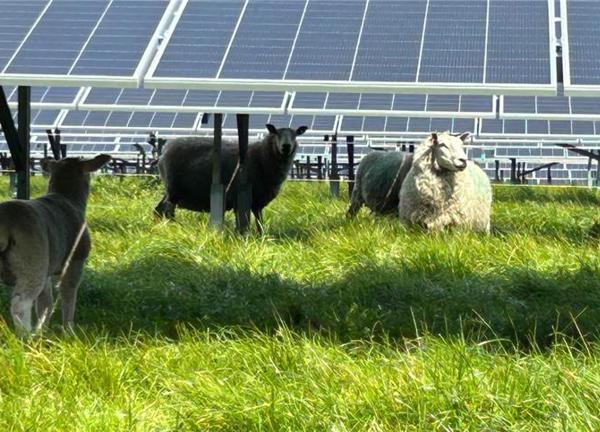
Restore and regenerate
Solar farms will leave the land in better condition than now. Over the next 40 years, this land will enjoy a break from intensive farming, allowing the soil to recover and enrich, helping water retention and sequestering carbon from the atmosphere. Diverse wildflowers and native grasses will be able to grow creating natural habitats for pollinators, insects and small mammals.
Benefits of ground-mounted solar
Provides renewable energy.
Local energy generated is enjoyed by the whole community.
Helps improve Jersey’s energy sovereignty and diversity.
Promotes innovative farming techniques.
Protects Jersey’s biodiversity and preserves agricultural use of fields.
Supports government’s Carbon Neutral Roadmap and other government policies.
Supports local education & inspires the next generation.
Reduce potential vulnerability to price shocks by providing competitively priced power with stable costs for 40 years (lifespan of the installations).
Supports local industry partners – UK experts are upskilling local tradespeople, building on-Island capability in a new sector.
Powering our Island, together
Our current plan includes six carefully considered solar sites that play a key role in meeting the Island’s renewable energy needs. Three of these ground-mounted solar arrays have already received planning permission, while the remaining three are in consultation and pre-planning stages, with open dialogue and community input guiding every step. These six sites—located on just 0.6% of lower-grade agricultural land—represent our current planned proposal. And while modest in footprint, they have the potential to deliver a meaningful contribution to local energy independence over much of the year. This plan could be adapted over time to meet the Island's changing energy needs while protecting the natural character of our landscape and the wildlife that depends on it.
Each of our solar sites tells its own agricultural story and builds on our rich heritage
Jersey’s first ground-mount solar farm is now generating electricity for the local community
With the 4.3MWp site now live, we’ve doubled Jersey’s solar generating capacity.
The site at Moulin a Vent in St Clement is a true community project owned by the Island, providing power for the Island. It will power the equivalent of 14% of Jersey homes, every year for the next 40 years.
JE’s CEO Chris Ambler shares his thoughts on this important moment in Jersey’s energy story.
Locally-generated energy today
The amount of power generated can differ depending on the weather. Take a look at what is being generated today.
0 MWh
Today
Locally-generated energy yesterday
Take a look to see how much energy has been generated by our solar farm in the last 24 hours.
4 MWh
Yesterday
Energy generated over time
Take a look back at how much energy your solar farm has generated since we connected it to the grid.
151 MWh
Last 31 days
33 MWh
Last 7 days
4982 MWh
Last 12 months
What does this all mean?
Take a look at what these figures* mean to you.
664
Houses powered to date
289
Days the solar farm has been connected to the grid
71.178m
Cups of tea generated to date
19.431m
Miles in an EV to date
Farming innovation
From the sheep grazing our St Clement site to exploring which crops fare best growing around and under the panels, there is growing evidence that "agrivoltaics", using land for both energy and farming production, is bringing increasing diversity and economic value while traditional farming practices dwindle.
Jersey Electricity has partnered with Harper Adams University and Lancaster University to further explore the potential of agrivoltaics and the opportunities it holds for Jersey.
Solar news
We have secured permissions for the Channel Island’s first three ground-mount solar arrays and have seven operational commercial rooftop arrays with permission secured for another. Keep up to date with works as they progress – and meet the sheep who will be making their home around the ground solar panels.
FAQs
How are ground-mount solar sites selected?
Jersey Electricity has strict evaluation criteria for project sites that reflect the special characteristics of Jersey. We have evaluated nearly 200 potential project sites to find suitable locations, including brownfield sites such as glasshouses and sites in the Built-Up Area. The vast majority of these have fallen away as not being suitable for ground solar schemes. We consider many factors such as visual impact, land quality, biodiversity impacts and proximity to Listed Places and to the grid itself.
All projects seek to:
-
Minimise any negative impacts on the local area.
-
Offer significant biodiversity and ecological improvements, and be managed to maximise these benefits.
-
Provide opportunities to maintain the land in agricultural use, but also provide potential for innovation in new agriculture.
-
Produce local renewable power cost-effectively to keep electricity prices down.
What is agrivoltaics?
Agrivoltaics is the use of land for both generating energy and farming. Jersey has an excellent opportunity to become a leader in ”agrivoltaics” research, especially involving novel growing practices, attracting new entrants to agriculture, and diversifying farming practices.
What are the advantages of agrivoltaics?
Agrivoltaics aims to reduce some of these impacts, for instance, protecting plants and livestock against scorching, heavy rain, and hail damage.
Studies show that solar panels create a micro-climate effect that can boost soil humidity and water retention, decrease peak temperatures through shading, and extend the growing season by providing shelter from sun, wind, and frost. Many crops are naturally partially shade-tolerant. Bi-facial solar panels allow sunlight to pass through them, which allows us to control the light levels beneath the panels. Jersey Electricity is using bi-facial panels on all of its solar farm projects.
JE’s agrivoltaic partnerships provide an opportunity for diversification of agriculture, with advanced systems making commercial and market gardening more feasible. This creates a potential economic opportunity for Jersey, diversification away from large scale farming (in which the Island may find difficulty competing) as well as providing food resilience and security for the local market.
What solar panels are you using?
We use bi-facial solar panels for our ground-mounted solar arrays, meaning some light travels through the panels to the ground below. This allows crops to be grown underneath while also increasing energy generation.
Can traditional farming continue under solar panels?
A solar array enables continued agricultural use of the fields. JE willingly signs up to a Planning Obligation Agreement for each site, meaning the sites must remain in continued agricultural use. JE is providing financial support into novel farming methods that could allow the local sector to adapt to future needs. Our goal is to work with local farmers to help create new farming opportunities that can co-exist alongside energy generation.
What is the visual impact of a solar farm on the landscape?
One of the key considerations for site selection is the amount of existing screening around a potential site. We look to improve existing hedgerows and tree-lined boundaries by “gapping-up” (planting new saplings and whips into gaps) and planting new, native hedgerows to further improve screening.
Placing solar farms on flat south-facing land or gentle slopes also helps to minimise the impact on the landscape. Whist existing natural screening is sought, shading needs to be avoided in the design of the panel layout, so the site can yield optimum electricity generation. A landscape and visual impact assessment (LVIA) accompany the planning application.
What is the impact in the land?
No widespread ground levelling is required and there is practically no loss of soil coverage as enough sunlight and rain can get through/between the panels to maintain healthy plant life. Resting the land from intensive arable agriculture improves carbon sequestration, increases the organic content of the soil, which significantly increases the water holding capacity. This means that food risk is reduced, and soil health and quality are improved.
Do solar farms make any noise?
Our solar panels have no moving parts (we are not presently using tracker solar, which is substantially more expensive to install and maintain). There may be some low-level noise from the fans, which can switch on in high temperatures used to keep electrical infrastructure equipment cool. The silence of a solar farm is one of the things visitors often comment on.
How are the panels attached to the ground?
Solar panels are attached to an aluminium mounting system, which is bolted to galvanised steel posts that are driven into the ground. This avoids the need for a concrete base platform and makes it easier to recycle the system at the end of its life. Other than foundations for any on-site kiosk (which can easily be removed), there is no concrete used in foundations for the panels themselves. This makes it easy for the site to be fully restored back to natural soil or grass in a better state than when the field was first converted for solar.
How long does the construction of a solar farm take?
Once consented, and depending on the size, the main installation works take approximately 12-16 weeks. There are usually some preparatory works like constructing access tracks and building fences.
Do solar farms create glare?
Solar modules are made to absorb as much light as possible, and not to reflect it. They are light converters and have extremely low reflection levels, which increases the efficiency of the cell. Any reflection that may occur might be caused by the mounting structure and would be limited, as the sun’s position changes all the time.
Do solar farms affect aircraft?
Solar farms have been installed near airports worldwide. There have been no reports of disturbances from environmental tests or from open-space solar farm usage. In fact, pilots have been reported to use solar farms as visual markers for navigation. That said, surveys are in any case done to ensure that any solar farms do not have an adverse impact on flight operations.
What happens when the solar farm is decommissioned?
All JE’s solar sites adhere to a Restoration Obligation, which forms a part of the Planning Obligations Agreement. Restoration will happen automatically, without intervention, at the end of the consent period which is usually 40 years. This restores the land to its original state that was in place before the solar farm, with added benefits of improved biodiversity, soil quality, and new/reinforced native hedgerows.
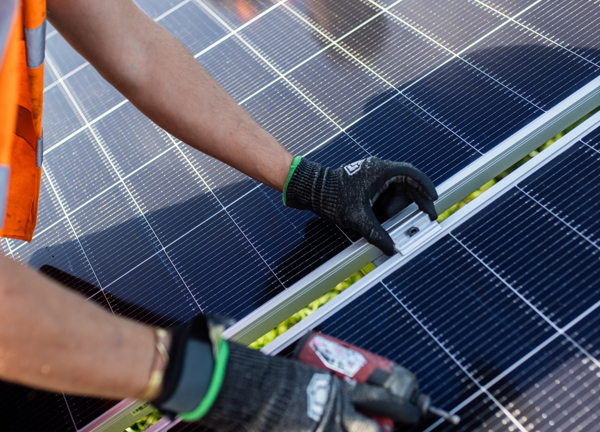
Our partners
We'd like to extend our thanks to all our partners who help bring our solar farms to life.
Horizon Energy & Power
Ecogen
Steedman Planning
IPV Flexgen
Carey Olsen
Geomarine
Redstone Ecology
Museum of London Archaeology
Macroworks
Panigot Farm
RB Agriculture
AWP Transport
Hafren Water
CADmando
Pager Power
Solarport
SunWorks
Jersey Trees for Life
RS Reinforcements
Pat Malony
AA Langlois
CA Frazier
Gordons Electrics
Jubilee Scaffold
Lynx Plastering
Naturalis
RBA
Trinity Joinery
ALWIRA Roofing
MBS Brickwork
4hire – Plant/Equipment
Agrico
1. MBS Masons
2. Brady and Gallagher
3. Rozel Shipping
4. Marine Hydraulics
5. Normans
6. Channel Island Fuels
7. Toolbolt
8. JFTU
9. Pentagon
10. CopCoy
11. TDS
12. GR8
13. Granite Products
14. WP recycling
15. Ernie le Feuvre
16. South Pier Marine
17. Nuts about Bolts
18. Express Electrics
19. City Electrical Factors
20. Woodside Logistics
21. Sutton Transport
